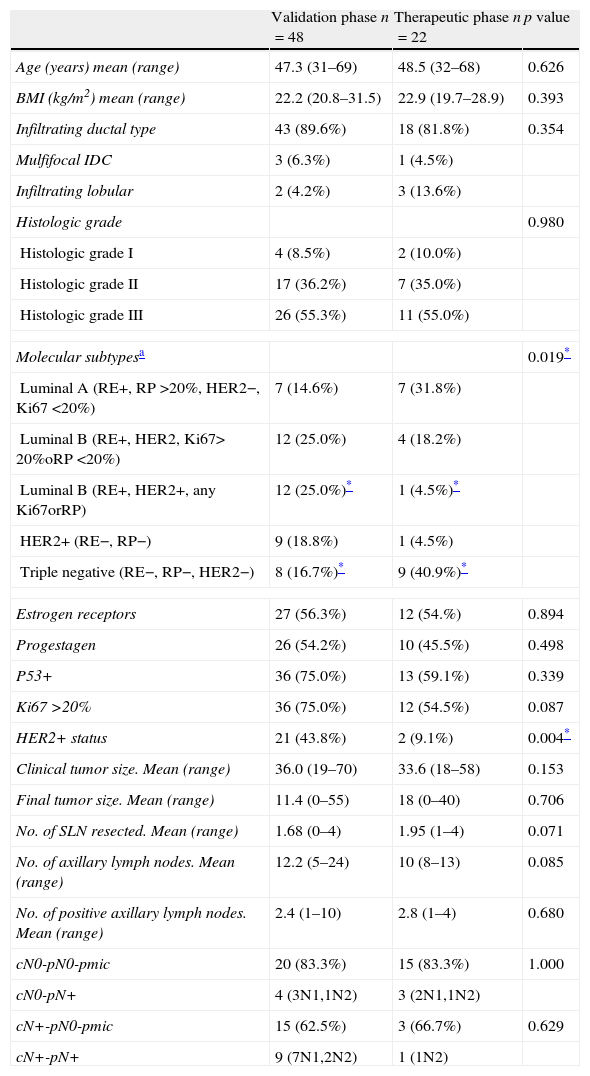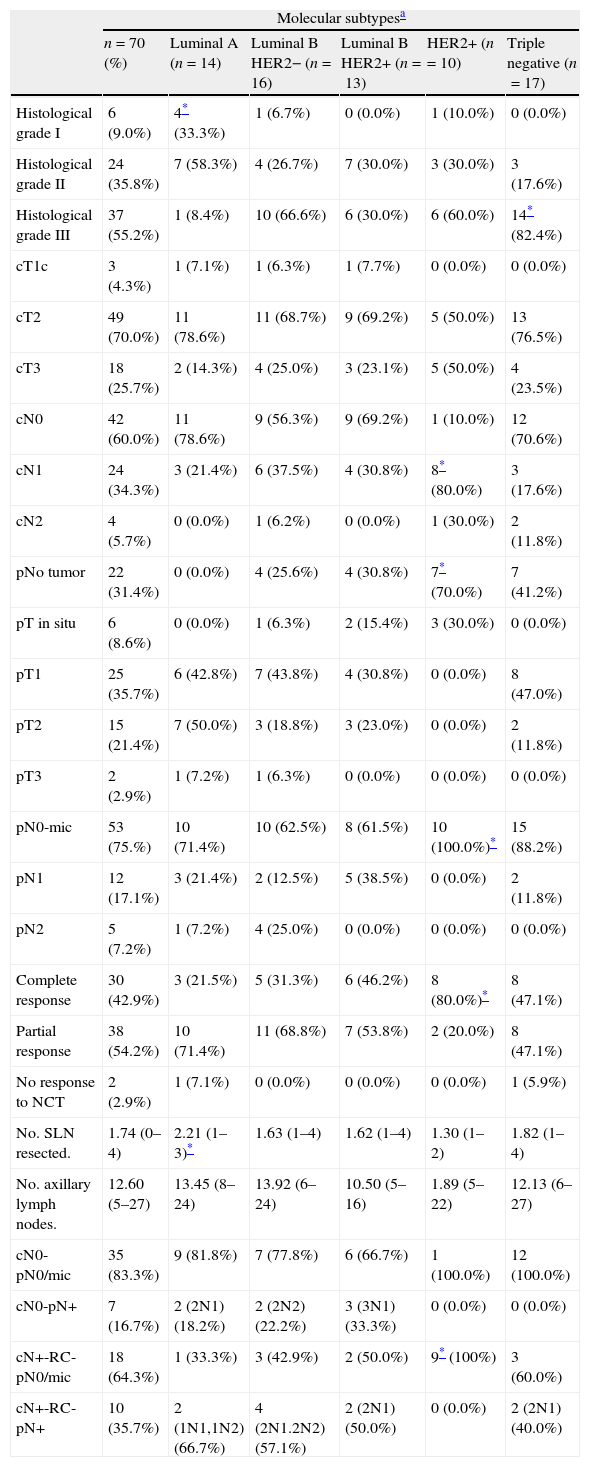To evaluate the influence of the molecular subtype (MS) in the Sentinel Node Biopsy (SNB) technique after neoadjuvant chemotherapy (NAC) in women with locally advanced breast cancer (BC) and a complete axillary response (CR).
Material and methodsA prospective study involving 70 patients with BC treated with NAC was carried out. An axillary lymph node dissection was performed in the first 48 patients (validation group: VG), and in case of micro- or macrometastases in the therapeutic application phase (therapy group: TG). The patients were grouped according to MS: 14 luminal A; 16 luminal B HER2−; 13 luminal B HER2+; 10HER2+ non-luminal; 17 triple-negative.
ResultsSNB was carried out in 98.6% of the cases, with only one false negative result in the VG (FN=2%). Molecular subtype did not affect SN detection. Despite the existence of axillary CR, statistically significant differences were found in the proportion of macrometastasis (16.7% vs. 35.7%, p=0.043) on comparing the pre-NAC cN0 and cN+. Breast tumor response to NAC varied among the different MS, this being lowest in luminal A (21.5%) and highest in non-luminal HER2+ group (80%). HER2+ and triple-negative were the groups with the best axillary histological response both when there was prior clinical involvement and when there was not.
ConclusionsMolecular subtype is a predictive factor of the degree of tumor response to NAC in breast cancer. However, it does not affect SNB detection and efficiency. SNB can also be used safely in women with prior node involvement as long as a complete clinical and radiological assessment is made of the node response to NAC.
Evaluar la influencia del subtipo molecular (SM) en la biopsia del ganglio centinela (BGC) tras quimioterapia neoadyuvante (QTN) en cánceres de mama (CM) localmente avanzados y respuesta completa axilar (RCA).
Material y métodosEstudio prospectivo de 70 CM tratadas con QTN para cirugía conservadora. Se realizó linfadenectomía axilar en 48 pacientes (fase validación), y en caso de micro o macrometástasis (fase terapéutica). Clasificadas según el SM: 14 luminal A, 16 luminal B HER2-, 13 luminal B HER2+, 10 HER2+ no-luminal, 17 triple-negativo.
ResultadosLa BGC se realizó en el 98.6% de los casos, con un falso negativo en la fase de validación (FN=2%). El SM no influyó en la detección del GC. A pesar de existir RCA, al comparar los cN0 y cN+ preQTN, encontramos diferencias significativas en la proporción de macrometástasis (16,7% vs. 35,7%, p=0,043). La respuesta completa del tumor mamario tras QTN varió estadísticamente entre los SM, siendo la más baja los luminal A (21,5%) y la más alta los HER2+ no-luminal (80%). El HER2+ y el triple negativo fueron los grupos con mejor respuesta patológica axilar tanto si existía afectación clínica previa o no.
ConclusiónEl SM es un factor predictivo del grado de respuesta tumoral a la QTN en el CM pero no influye en la detección y la eficacia de la biopsia del ganglio centinela. Es seguro utilizar la biopsia del ganglio centinela también en mujeres con afectación ganglionar previa siempre que se realice una completa evaluación clínica y radiológica de la respuesta ganglionar a la QTN.
Article

Revista Española de Medicina Nuclear e Imagen Molecular (English Edition)







